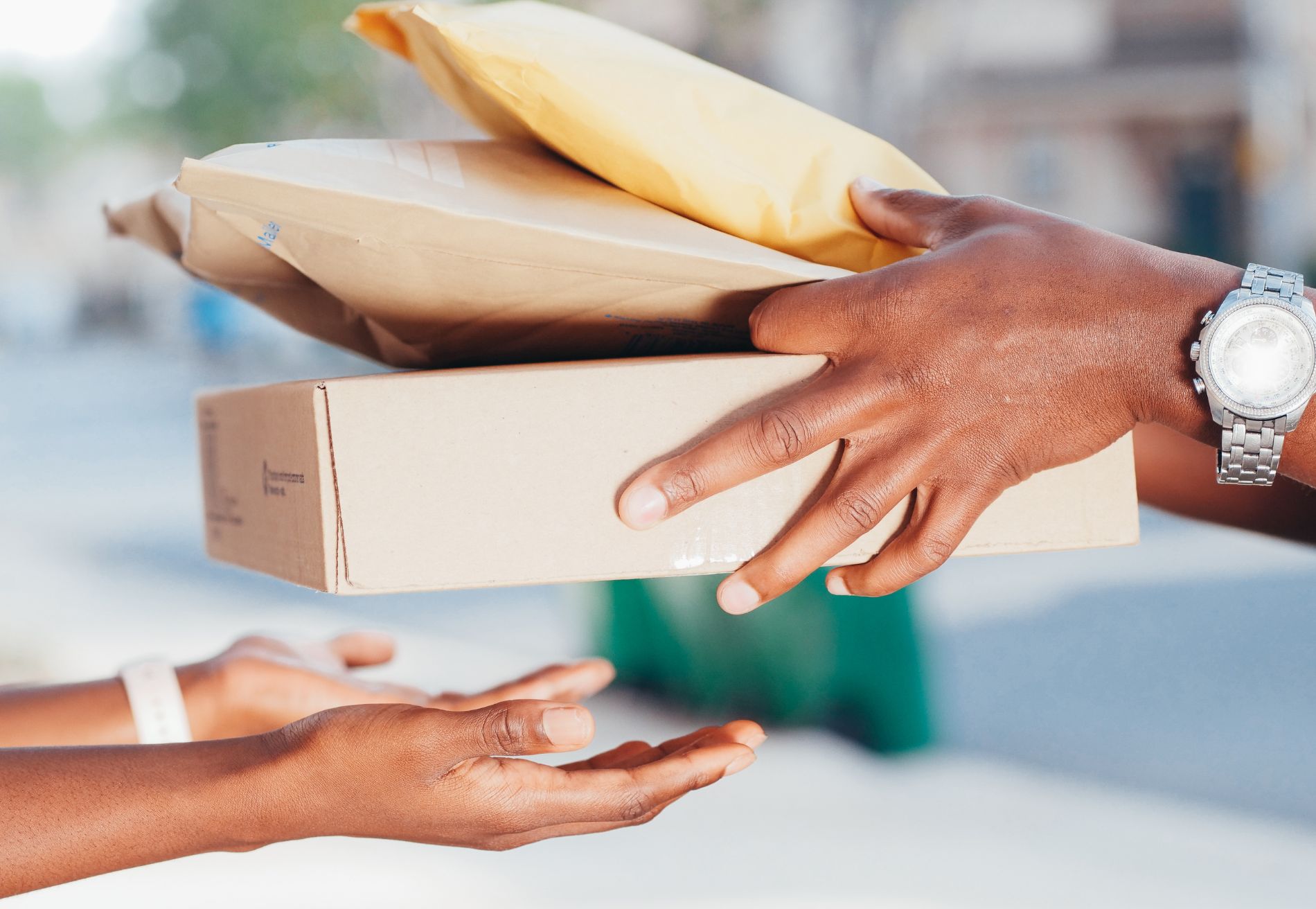How to Start a Pharmacy Delivery Service in Australia

If you own a delivery business (or are thinking of starting one) in Australia and are looking to capitalize on the next big delivery market, pharmacy delivery could be a great opportunity. The Australian pharmacy market is projected to grow by more than 5% between now and 2030, and the demand for same-day delivery is expected to grow by 12.30%. Combine that with an aging population and increased demand for convenience, and you’ve got a perfect storm for profitability.
But pharmacy delivery is more complicated than swapping standard packages for prescription bottles. Any business handling pharmaceuticals becomes part of the healthcare logistics industry, which means dealing with regulations about privacy concerns and safe product handling. Entrepreneurs who are prepared to jump over a few hurdles will find that these regulations also thin the competition for pharmacy delivery. In this guide, we’ll look at why everyone suddenly wants pharmacy delivery, the basic regulations you’ll need to follow, and the general steps you’ll follow to start a pharmacy delivery service in Australia.
Why is pharmacy delivery in demand?
Why is pharmacy delivery suddenly such a big deal in Australia? The short answer: demographic shifts, technology advances, and the COVID-19 pandemic. The pandemic led to a 'forced adoption' of telehealth services, with many Australians accessing remote healthcare for the first time as the government expanded access from rural areas to all Australians nationwide. The country, it seems, never looked back. What started as an emergency pandemic measure has become a permanent consumer expectation.
Luckily, the tech landscape shifted just as quickly, helping small, independent businesses meet customer demands. With the growing affordability of delivery management software, even small businesses, such as independent pharmacies and delivery services, can start delivering directly to customers’ doorsteps. The opportunity in prescription delivery is unique because most major third-party delivery platforms don’t allocate sufficient resources to comply with the necessary regulations (more on that below).
Navigating the regulatory maze
Pharmacy and prescription delivery services must comply with both transportation and healthcare regulations. Handling prescriptions means handling customers’ medical information. Medications and prescriptions may only be in your hands for a short time, but handling medications at all obligates you to protect your customers’ privacy. These are a few relevant laws and governing bodies you need to know:
- Privacy Act 1988: This law governs how your business can collect and handle sensitive patient data. You may need to obtain written consent forms from your customers, and you’ll definitely need to store customer data (such as addresses and contact information) in a more secure location than a spreadsheet.
- Therapeutic Goods Administration (TGA): This office sets the rules for what medications can be delivered and under what conditions. Some medications require refrigeration during transport, or—like Schedule 8 medicines—require strict, secure handling.
- Pharmacy Board of Australia guidelines: this organization establishes professional standards for how deliveries must be conducted, particularly around patient identification and handover procedures. This isn’t a case where you can leave a package in the letterbox and drive away; in most cases your drivers will need to see some form of identification and obtain a customer signature.
- State legislation: State-level regulations add another layer, with each jurisdiction writing additional rules for dispensing and tracking certain medications. What’s legal in Queensland might not pass muster in Victoria.
Delivery business owners tend to be a do-it-yourself group. But don’t be tempted to go it alone here. Run your plans by the Pharmacy Guild of Australia or a local legal advisor specializing in healthcare logistics to ensure your processes are compliant.
Starting your pharmacy delivery service step-by-step
There are two major business types in the pharmacy delivery space: established pharmacies that add delivery as a service, and independent delivery companies that deliver from several pharmacies. The entry into the industry may be slightly different for each business type, but the overall steps are generally the same.
Step 1: Choose your delivery model
There are three main ways to deliver anything these days; with a team of in-house drivers, with third-party drivers, or a hybrid delivery strategy that combines in-house and third-party drivers. With In-house delivery, you hire a team of delivery drivers who deliver only for your business. In third-party (sometimes called “partnered”) delivery, you route deliveries through a business that specializes in delivery.
For same-day deliveries, pharmacies adding delivery services will have fewer options for third-party services than, say, a restaurant. Many of the major same-day third-party delivery platforms do not meet the regulations for patient privacy required for delivering prescriptions. For same-day delivery, you’ll likely be using your own drivers. Though the major third-party players can typically deliver any over-the-counter products.
Step 2: Set up operations
Whether you are a pharmacy or a delivery business, choosing your delivery area will be crucial to your business. You want to ensure you have enough staff to support your delivery volume, and also that you deliver to areas where your customers are concentrated. Delivery-only businesses may specialize further, choosing to deliver from pharmacies to specific clients like retirement villages or aged care homes.
Establish clear order windows. With your delivery area set, you’ll also want to establish order cut-off times. This is especially important if you guarantee delivery in a certain timeframe, like “delivery within an hour.” You don’t want to miss your customer service goals and marketed promises because a customer placed an order in the middle of the night.
Speaking orders, you’ll also need to decide how you will receive orders. Will customers place orders over the phone, via your website, or will you use a custom-designed app? Larger operations may choose all of the above. You can also start small with phone or online orders and add more ordering options as your business grows.
The last detail of your operation is deciding how you’ll organize driver dispatch. If you’re a pharmacy partnering with a third-party delivery company, this could be as simple as sending the delivery details to the delivery service. Small, independent delivery services may be tempted to handle delivery details manually, but when dealing with sensitive information like prescriptions, its best to use delivery management software to manage your orders and deliveries.
Shipday delivery management software receives orders, arranges driver routes, and sends automated delivery updates all while maintaining customer confidentiality. Start with Shipday for free, and grow your pharmacy delivery business today.
Step 3: Register and insure your business
With your operational details sorted, its time to register and protect your business. First, you’ll want to register your business properly with ASIC and obtain an Australian Business Number (ABN). If you are adding delivery services to an existing business, you’ll already have both of these. Depending on your operational location, you may also need to register with your state business authorities. Check with your local small business authorities (or that legal advisor you spoke when navigating the regulatory maze; you did talk to an advisor, right?).
Once registered, ensure you have the correct business insurance. Even existing businesses should take the time to review and audit their policies. You don’t want to discover that your delivery vehicle, driver, or delivery error was not covered after an accident or error already occurred.
Step 4: Define SOPs (Standard Operating Procedures)
Before you deliver your first prescription, you’ll need to have some written procedures in place. Writing everything down keeps you, your delivery drivers, and your clients on the same page. The key areas for SOPs include:
- Prescription validation: How will you verify that prescriptions are legitimate and complete before they are delivered?
- Secure packaging: How will you package your deliveries to ensure client privacy and prevent tampering?
- Cold chain maintenance: How will you maintain cold temperatures for medications that require refrigeration?
- Identity verification: How will your drivers confirm they are delivering to the correct person? What forms of identification will you accept? What if the patient is not at home; can someone else accept the delivery?
- Missed delivery protocols: What will your team do if the customer is not home? Do packages return to your dispatch location or are they sent back to the pharmacy? Will you charge for missed deliveries?
Write these procedures down and train your team to use them. You can always update your procedures as your business grows and you identify new opportunities to improve your operation.
Step 5: Choosing the Right Technology for Your Pharmacy Delivery Business
Technology is the backbone of a successful pharmacy delivery service. Unlike standard deliveries, pharmacy delivery is high-stakes and time-sensitive. From managing fluctuating order volumes to coordinating drivers, communicating with customers, and keeping operations on track—there’s a lot to juggle. That’s where the right delivery management platform makes all the difference.
Shipday is built for fast-moving delivery businesses that need simplicity, reliability, and scale. It helps you:
- Centralize orders from multiple channels (phone, online, POS, or app)
- Automatically assign and route deliveries to drivers based on location and availability
- Track every order in real time so you and your customers always know where things stand
- Send live delivery updates and ETAs to reduce support calls and build trust
- Capture proof of delivery with photo, signature, and notes—right in the driver app
- Manage teams across locations with multi-dispatcher support and driver performance insights
Whether you’re just getting started or expanding your territory, Shipday gives you the tools to streamline day-to-day operations, reduce manual work, and grow faster.
Start with Shipday today and bring dependable, compliant, and streamlined pharmacy delivery to your community.
Frequently asked questions
Q: Can Schedule 8 medications be delivered?
A: Under very strict conditions, some Schedule 8 medicines can be delivered. Delivering them typically requires photo-ID verification and, in some cases, a signature. You’ll need to check with the TGA and state legislation. Due to the increased liability with these medications, some pharmacies and pharmacy delivery companies opt not to deliver Schedule 8 medicines.
Q: Can I use Uber or DoorDash for pharmacy delivery?
A: Third-party on-demand platforms like Uber or Doordash are not an option for pharmacy delivery. Medications, like all medical information, have unique privacy and security concerns, and the major platforms tend not to go to the trouble to comply with these regulations.
Q: Do I need special packaging?
A: Yes. You should deliver all medications in tamper-proof, opaque packaging. This preserves customer privacy and protects your staff from the appearance of tampering with the medications. You’ll also want to invest in temperature-controlled boxes and cold packs to hold medications that require refrigeration at safe temperatures.
Putting it all together
Establishing a profitable pharmacy delivery business requires navigating complex regulations, building compliant systems, and maintaining high service standards. But delivery businesses and pharmacies that are willing to put in the work wil find a recession-resistant business with high customer demand. If you have the ability to comply with regulations and safely maintain customer information, the timing couldn’t be better to start a pharmacy delivery business.
Index
Ready to get started?
Play around with it first, add your team, pay later.








.avif)






%201.svg)
